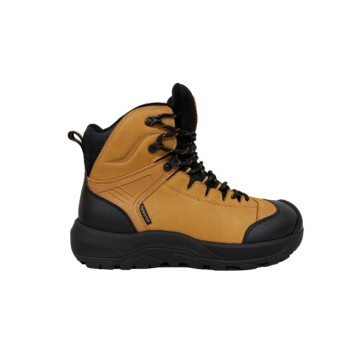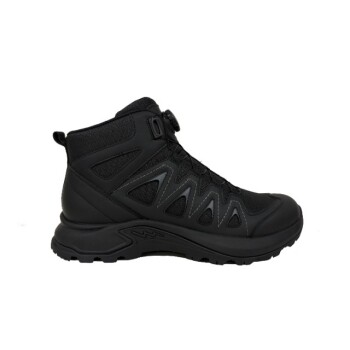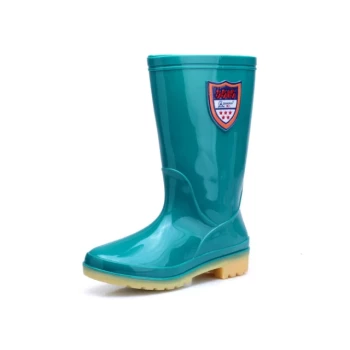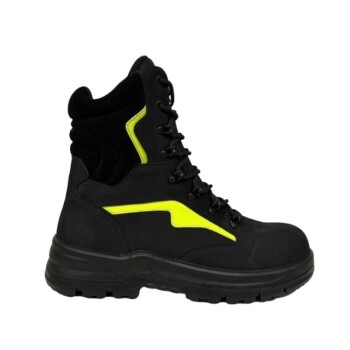In short, the tall height of a PVC boot provides better protection by significantly increasing the area of coverage. This design extends the barrier from just the foot to include the ankle and lower leg, offering a comprehensive shield against deeper water, splashes, and other environmental hazards that shorter boots cannot handle.
The core principle is simple: protection is a function of coverage. While any waterproof boot can keep your feet dry in a shallow puddle, a taller boot creates a more robust defense system for your lower legs, which are often just as vulnerable in demanding work environments.
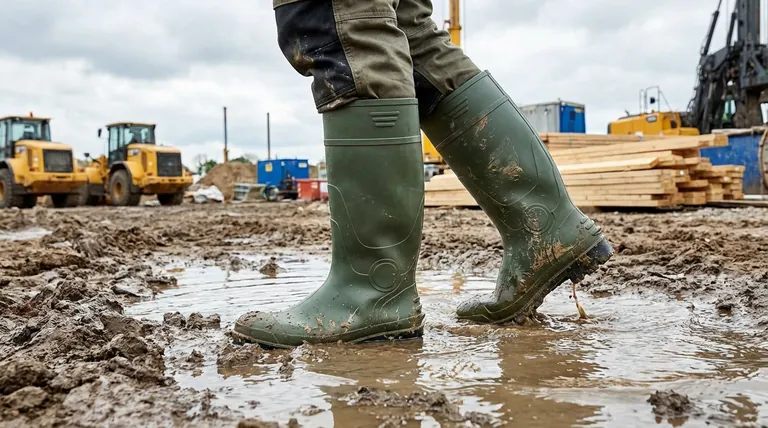
The Principle of Extended Coverage
The most obvious advantage of a taller boot is that it covers more of you. This simple geometric fact has critical implications for safety and dryness in a variety of conditions.
Beyond the Foot and Ankle
Standard shoes or ankle boots leave the shins and calves completely exposed. A taller PVC boot creates a continuous, impermeable barrier that extends towards the knee.
A Barrier Against Deeper Hazards
This extended coverage is essential when navigating more than just a simple rain puddle. Taller boots allow you to walk through deep water, mud, or flooded areas without risk of moisture getting inside from the top.
Shielding from Splashes and Spills
In industrial, agricultural, or cleaning environments, hazards often come from splashes and spills. A taller boot shaft effectively guards your lower legs and trousers from being contaminated by water, chemicals, or other liquids.
More Than Just Waterproofing
While keeping dry is the primary goal, the benefits of a tall boot's structure extend to physical protection and stability as well.
Defending Against Physical Risks
The material of the boot shaft provides a valuable layer of protection for your shins and calves. It can help defend against scrapes, abrasions, and minor impacts from tools, debris, or equipment.
Enhancing Stability and Control
A taller, more rigid boot structure offers greater support for the entire ankle and lower leg. This can help immobilize the joint, provide more control over rotation, and increase overall stability when walking on uneven or slippery terrain.
Understanding the Trade-offs
Choosing a taller boot involves considering its inherent compromises. The right choice always depends on the specific demands of your task and environment.
Flexibility vs. Coverage
The same structure that provides support can also limit ankle flexibility. For tasks requiring a high degree of agility or squatting, the stiffness of a very tall boot can be a hindrance.
Weight and Breathability
More material means more weight, which can lead to fatigue over a long day. Taller PVC boots also trap more heat and moisture, reducing breathability compared to shorter footwear.
Matching Height to the Hazard
Ankle-height boots are often sufficient for basic protection against wet ground. However, knee-height boots are purpose-built for environments where the risk of deep immersion or significant splashes is a daily reality.
Making the Right Choice for Your Goal
To select the appropriate boot, you must first assess the specific risks of your environment.
- If your primary focus is light-duty work with shallow puddles: Ankle-height boots offer a good balance of protection and flexibility.
- If your primary focus is farming, construction, or industrial work: Taller, knee-high boots are essential for comprehensive protection against deep liquids, splashes, and physical hazards.
- If your primary focus is maximum stability on rough terrain: A well-constructed tall boot provides superior support for the ankle and lower leg.
Ultimately, selecting the correct boot height is a critical decision in aligning your personal protective equipment with the real-world risks you face.
Summary Table:
| Protection Feature | Tall PVC Boot Benefit |
|---|---|
| Extended Coverage | Shields ankles, shins, and calves from deep water and splashes. |
| Physical Protection | Defends against scrapes, abrasions, and minor impacts. |
| Enhanced Stability | Provides superior ankle support on uneven or slippery terrain. |
| Hazard Suitability | Ideal for farming, construction, and industrial environments. |
Need Durable, Protective PVC Boots for Your Team?
As a large-scale manufacturer, 3515 produces a comprehensive range of high-quality PVC boots for distributors, brand owners, and bulk clients. Our tall-height boots are engineered for maximum protection, durability, and comfort in demanding work environments.
Contact us today to discuss your requirements and get a quote!
Visual Guide
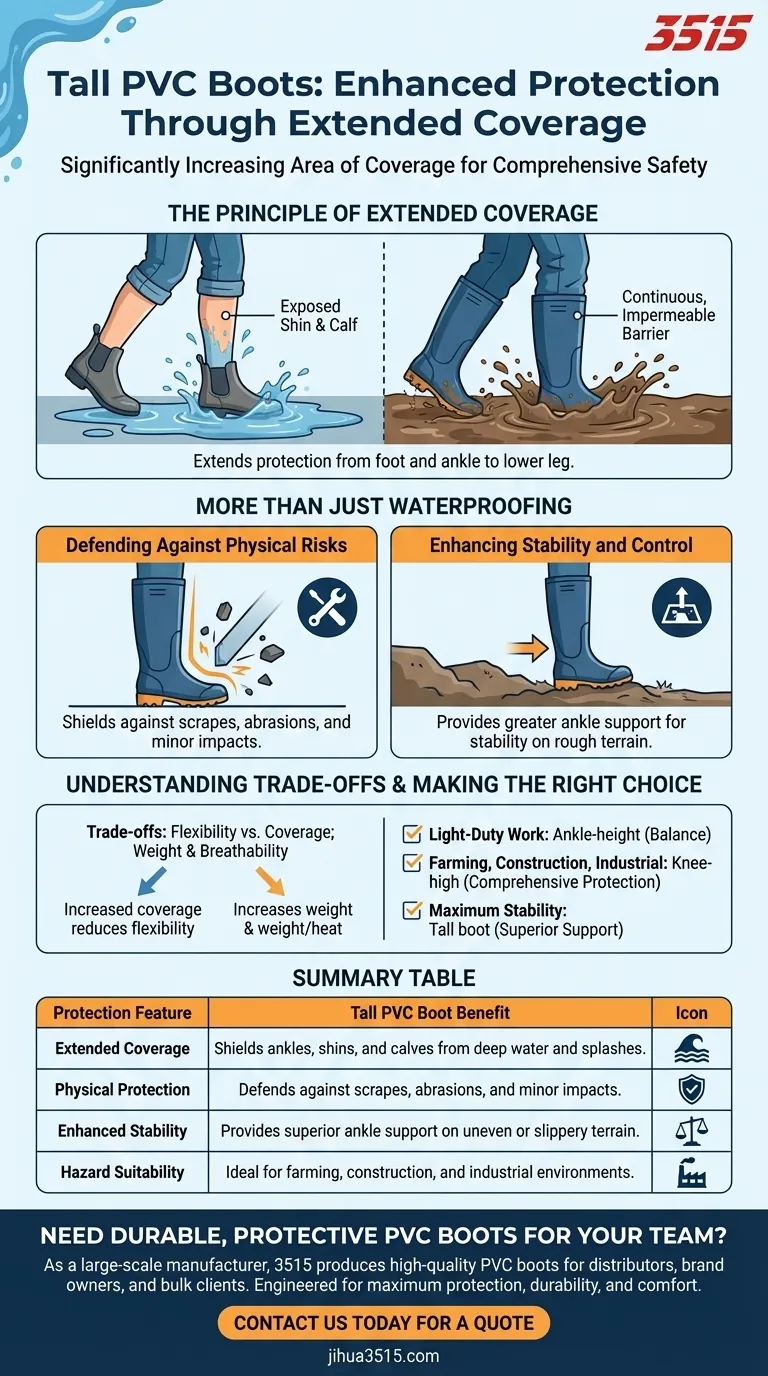
Related Products
- Safety Footwear Wholesale Manufacturer for Custom OEM/ODM Production
- Wholesale Waterproof Tactical Boots Custom Suede & High-Traction Soles
- Premium Flame-Retardant Waterproof Safety Boots and Shoes
- Wholesale Safety Footwear Manufacturer for Bulk & Custom OEM Orders
- High Performance Fire-Retardant Waterproof Safety Boots
People Also Ask
- What cultural and environmental considerations are tied to wearing shoes indoors? Balance Hygiene, Tradition, and Foot Health
- How long can you wear safety boots? The Lifespan is Determined by Wear, Not Time
- What are the differences between steel toe, composite toe, and alloy toe Wellington boots? Choose the Right Safety Toe for Your Job
- How do safety shoes contribute to cost savings for companies? A Strategic Investment in Risk and Cost Management
- Is it normal to wear shoes in the house? A Guide to Hygiene, Comfort & Culture





